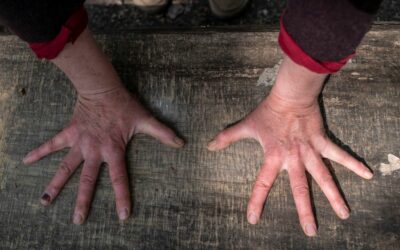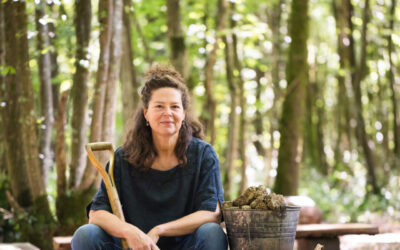For ages I’ve been wanting to make a pack, or back, basket from wood splints. They’re best made in the spring when the sap’s rising, so earlier this year I took a trip to the woods near Bath for a few days to make one.
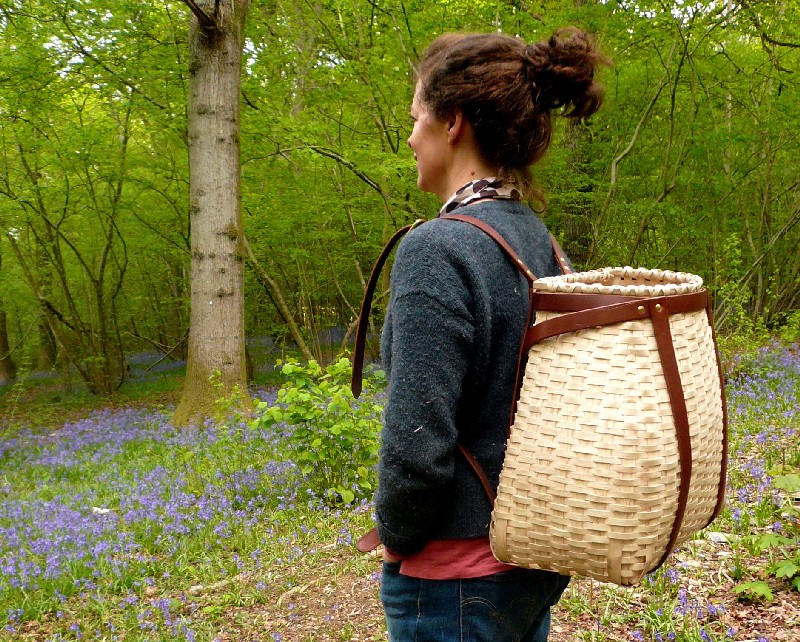
There’s a long tradition of black ash splint basketry in North America. Anthropologists and historians seem to disagree about the origins of splint wood basketry there, whether it was first introduced by Swedish settlers, or whether there was an existing tradition amongst the First Nation people.
This particular process, of pounding the ash to create splints (as opposed to splitting the wood), is relatively new in the UK. Our native ash species is a bit less pliable than the black ash used in the States, but it still produces great results and is a really appealing technique.
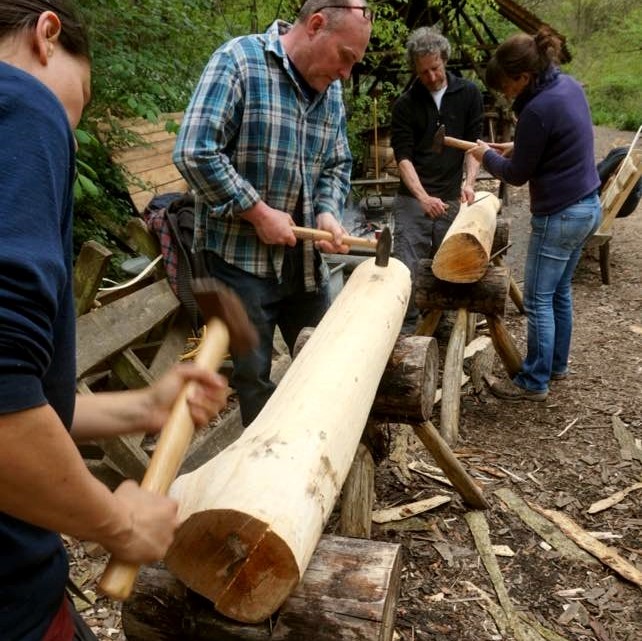
Our tutor, Andrew Kirby, has already chosen and felled the ash for us. Once the log’s epidermis has been removed by drawknife, pounding begins, over every square inch, in an overlapping pattern. This crushes the spring growth between the denser summer growth rings.
It makes the rings pull away from the log, and these are then lifted carefully off the log in long strips, or splints. The photo shows the layers that have been removed from the log.
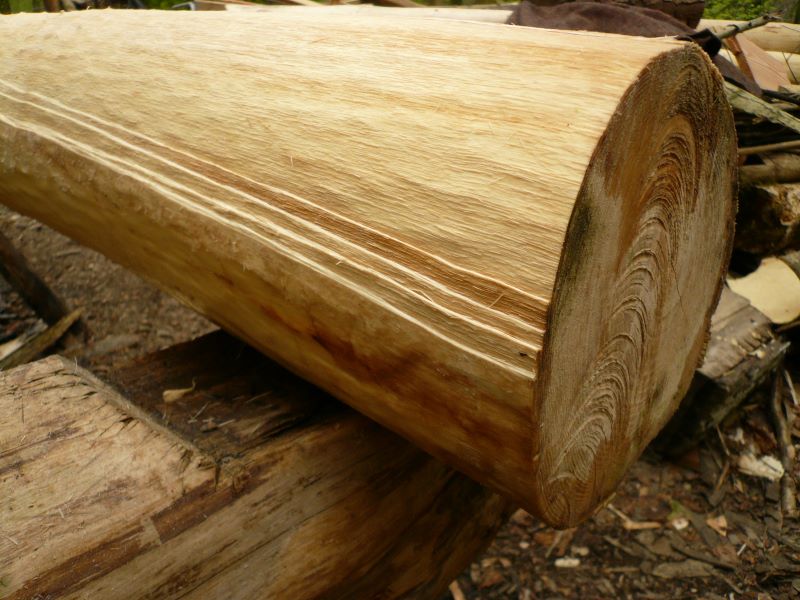
The splints are then shaved smooth with a really sharp knife and cut into the required widths for weaving. It’s a long and laborious job to prep the material… interspersed with a lot of knife re-sharpening and cups of tea.
As with all basketmaking, the choice and prep of the raw material is critical, and is usually the most time-consuming part. The splints that come off the log are of naturally varying thickness, and these different thicknesses are used in different parts of the basket.
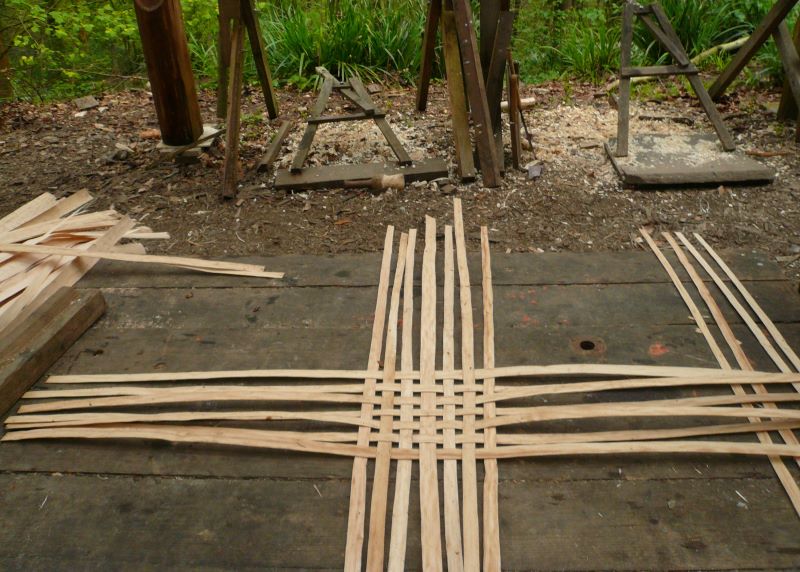
The base of the basket is a cross weave, which also creates the stakes (uprights). Weavers are added, shaping the belly of the basket.

The pungent scent of the carpet of wild garlic and the almost relentless sound of others in the group pounding ash logs accompanied me while I was weaving.
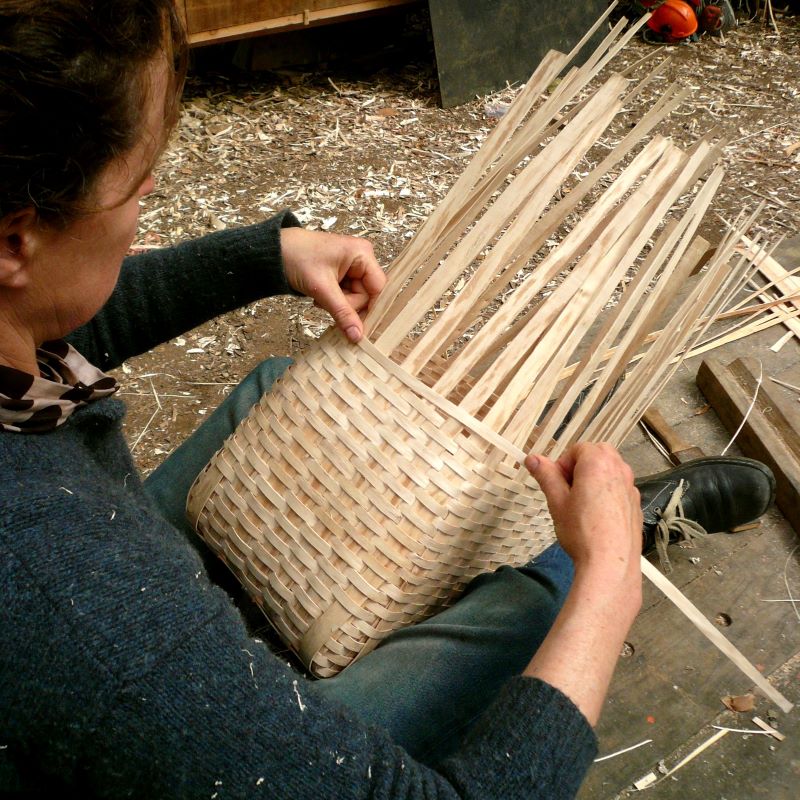
Leather straps cut from a large hide, stitched and riveted together, buckles attached…job done.
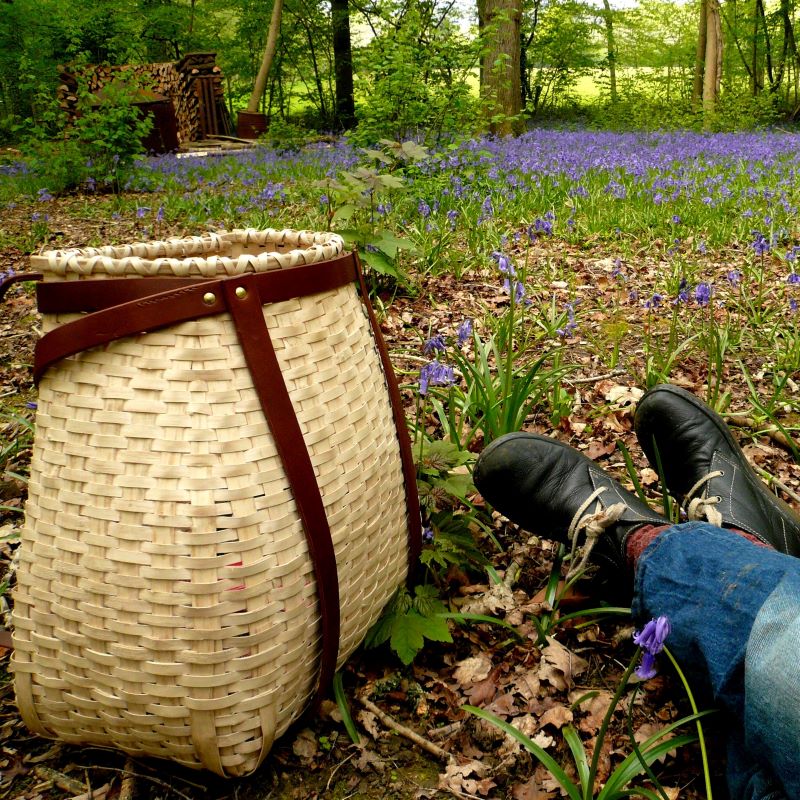
It turned out to be four days of hard graft to make this basket. The graft was eased by evening fireside gatherings; good conversation; a midnight, wood-fueled, outdoor bath; the owls calling at night. It was totally worthwhile for the huge satisfaction of completing my basket. So wonderful to have spent those days living and weaving in the woods.
I found this photo of an Adirondack style pack basket, early 20th century, USA.
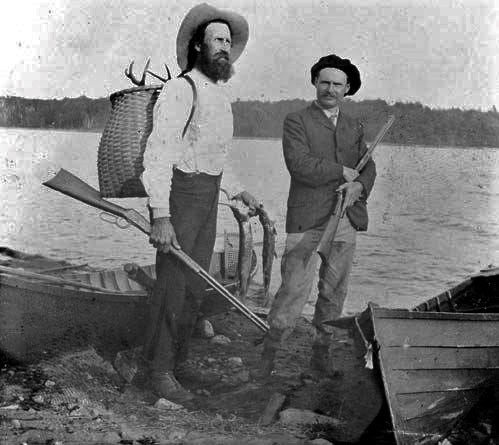
In North America the black ash, Fraxinus nigra, is under threat from the emerald ash beetle. Here in the UK, ash dieback is having an impact.
Native Hands basket making courses in Sussex
